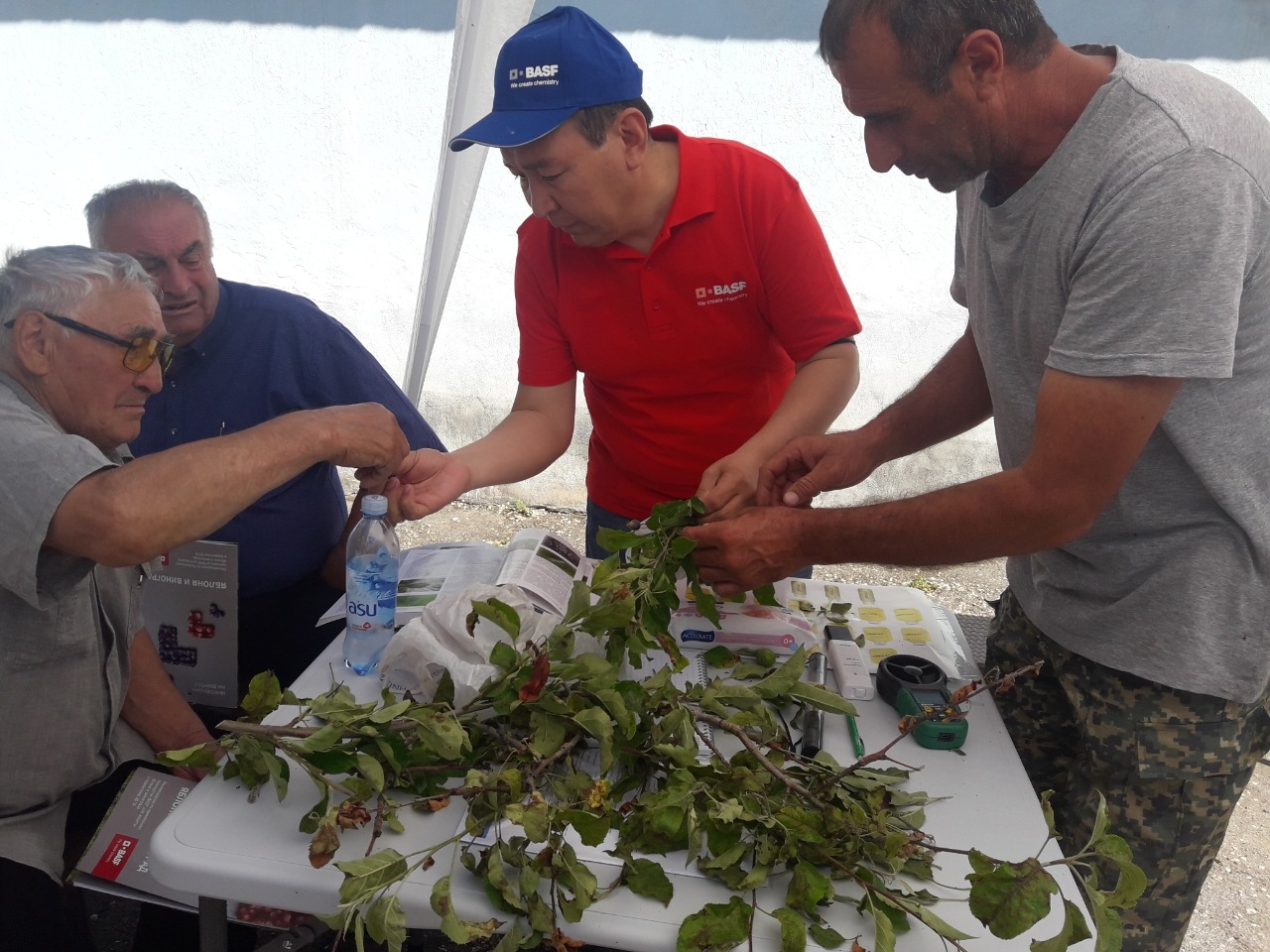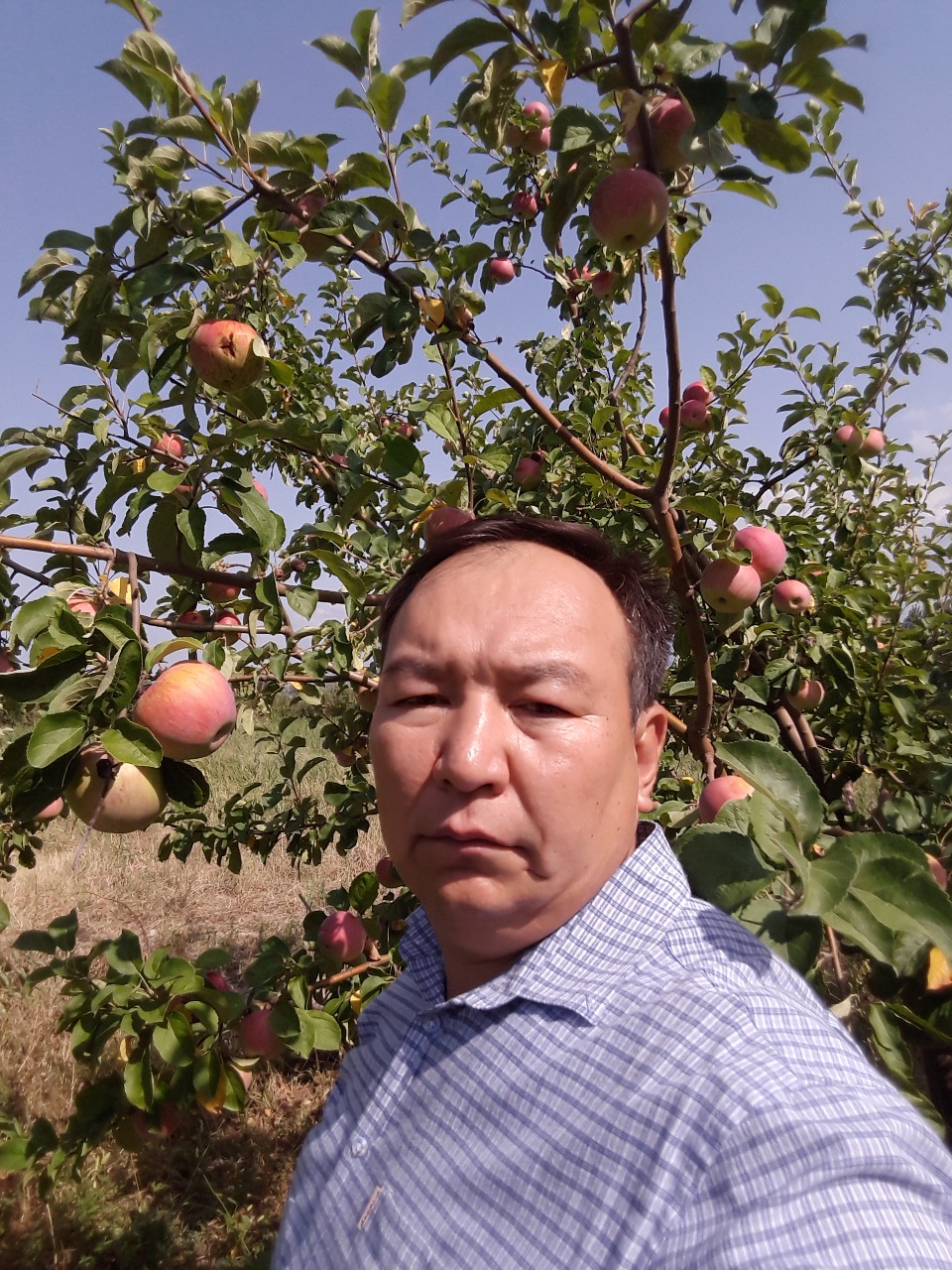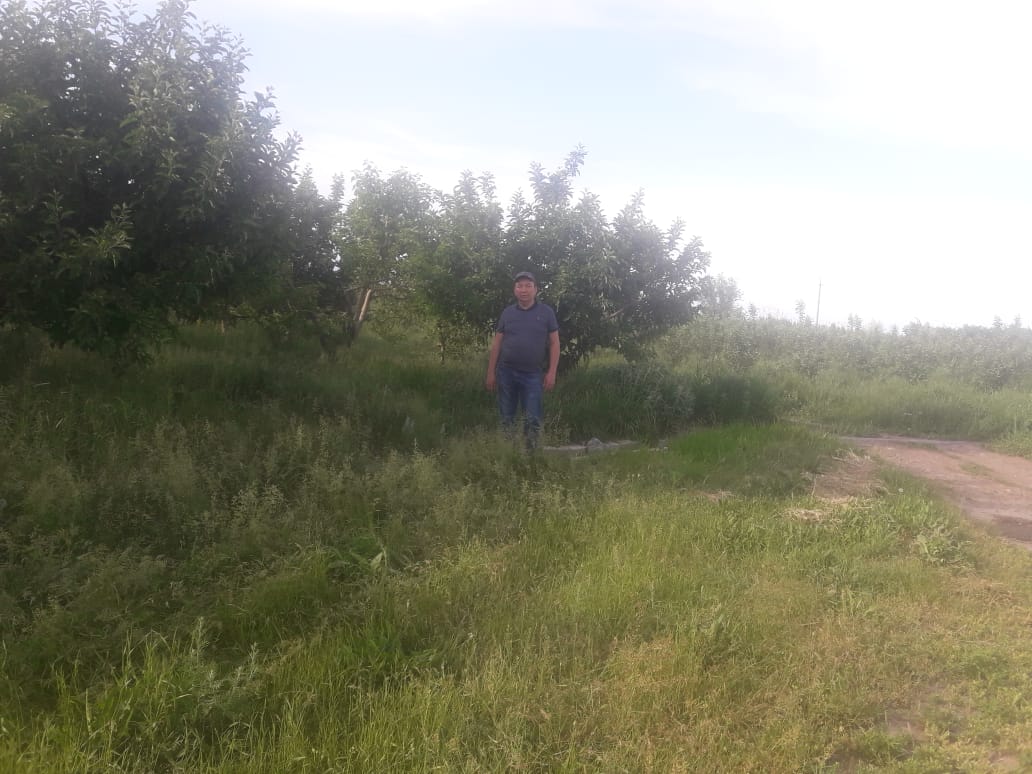
On May 14, 2020 scientists of “Zh. Zhiyembayev Kazakh Research Institute for Plant Protection and Quarantine” LLP during an online consultation for farmers made an overview on pests and diseases of fruit crops in 2019 and a forecast for the appearance in 2020. The speaker of the online consultation was Bakyt Kenzhekozhayevich Kopzhasarov, head of the department for the protection of fruits and vegetables and melons, candidate of biological sciences of the Republic of Kazakhstan.
During the entire growing season, scientists of the department for the protection of fruits and vegetables and melons of KazRIPPQ have done a lot of work to conduct phytosanitary monitoring of pests and diseases of fruit crops and to develop measures to combat them. Based on the data obtained, an annual review of the phytosanitary condition of gardens is compiled.
“Zh. Zhiyembayev Kazakh Research Institute for Plant Protection and Quarantine” LLP is subsidiary of “National Agrarian Science and Educational Center” JSC.

Overview of pests in 2019 and forecast for 2020.
In the Almaty region, last winter with slight frosts in 2019 contributed to the successful wintering of caterpillars of the apple and eastern moths. Fruit damage ranged from 1 to 55%. The number of caterpillars before leaving for wintering was 1-5 ex. / tree. In the second decade of September, the caterpillars went for wintering.
“The wintering supply of the apple and eastern codling moth remained high; in this regard, an increase in the number and harmfulness of the apple and eastern moth is expected in 2020,” B. Kopzhasarov noted.
"The wintering stock of apple and eastern fertility remained high, and therefore in 2020 it is expected to increase the number and malware of apple and eastern fertility," B. Kopzhasarov said.
Wet and warm weather in the early summer of 2019 had a beneficial effect on the development and spread of aphids. The maximum aphid population of 15-35% of leaves was noted in Almaty and Zhambyl regions. Conducted treatments in the gardens drastically reduced population. In August, the maximum density reached 15% of the populated leaves.
In 2020, the abundance and harmfulness of apple green aphids will be at a high level.
The beginning of tick exit from wintering places in 2019 was noted on April 1. The average population density ranged from 0.1 to 15 ex./leaf. On April 13, active reproduction and dispersal of the red fruit tick was observed. The maximum population density in this period reached 15 ex./leaf.
Dry hot weather in the second decade of June influenced to an increase in the number of garden spider mites. The maximum density at the end of June reached 3-5 ex./leaf. Ticks were observed at all stages of development: adults, larvae, eggs. In the second decade of September, after previous treatments with acaricides, the harmfulness of ticks significantly decreased. The population density did not exceed 1 ex./leaf. The beginning of the pest's departure for wintering was recorded in the third decade of September.
In 2020, in dry and hot weather, an increase in the number and harmfulness of fruit mites is expected.
Weather and climatic conditions in 2019 as a whole favorably affected the development of California scale insects. With a non-cold winter, the survival rate of the wintering stages of the Californian scale insects was 73.2%.
“In 2020, the number of California scale insects will be high.
In 2020, leafworms, moths, weevils, flower beetles, circle moths, cherry flies, sawflies and other pests will also cause significant fruit damage,” - forecast the scientists of the KazRIPPQ.

Regarding the diseases of fruit crops, scientists said that the spread of scab apple in 2019 was epiphytotic and widespread. A high stock of infection and weather conditions in the spring-summer period of 2019 contributed to the intensive development of scab. Primary infection was noted in the gardens of the southern region in the second decade of April in the flowering phase. Frequent precipitation, air temperature + 20-22 С influenced to the rapid spread of the disease. An increase in infected areas and a high percentage of lesions are annually observed in gardens where preventive agricultural and chemical measures are not carried out. In the gardens, where timely chemical treatments were carried out, the disease was stopped.
By the end of the growing season, the spread of the disease was noted in 75% of the surveyed area. The intensity of the development of the disease was 5-90%. In Almaty and Zhambyl regions, the defeat was observed from mild to severe.
Given the high wintering stock of infection, a reduction in the spread and development of scab in 2020 is not expected. Timely treatment against scab is needed.
Powdery mildew in 2019 was very harmful in the Almaty region. The greatest defeat was observed on apple trees of the Aidared Aport variety. The growth of the disease was noted from the second decade of June. In the treated areas, further spread and development of powdery mildew was not observed. The spread of the disease was 1-30%, the intensity of development - 2-30%.
In 2020, the spread of powdery mildew in fruit crops under favorable weather conditions will be significant.
In the Almaty region in 2019, klyastospor appeared in the flowering phase of stone fruits (apricot, plum). The first signs were noted on the apricot branches in the third decade of April in the Uigur district of Almaty region. In the second decade of May, the development of the disease was noted on cherry leaves, in private areas. The stock of wintering infection, as well as the prevailing weather conditions of spring (frequent precipitation, moderate air temperature of 15-22 ° C) created favorable conditions for the development of the disease.
The greatest distribution of 25% with an intensity of 5% was recorded in the Uyghur district (Almaty region).
“The spread of the disease in 2020 will depend on the stock of infection and weather conditions. Frequent rains, dew, fogs observed in early spring, and at moderate air temperatures will intensify the development of klyastosporiosis, ”B. Kopzhasarov said.
As for the bacterial fruit burn, it is a dangerous quarantine disease. We were the first to identify a fruit bacterial burn in Kazakhstan in 2010. According to the State Inspectorate, in 2018, a bacterial burn was spread in gardens of Almaty, Zhambyl and Turkestan on an area of 994.1 in 2019, the areas infected with a bacterial burn decreased to 160.4 ha in connection with a series of seminars among gardeners on how our employees measures to combat bacterial burns, uprooting of foci of infection and adverse weather conditions.
The weather conditions in 2019 were characterized by a long and cool spring, sharp changes in temperature, and frequent precipitation. Hydrothermal indicators for the growing season April-June restrained the development of a bacterial burn. Despite the increased humidity during this period, temperature indicators were low and ranged from 10-17 ° C. The optimum temperature for intensive reproduction of the bacterial burn pathogen should be above 20 ° C, and relative humidity above 60%. In May and June, there is a slight increase in temperature, but the humidity in these vegetation periods did not reach the required parameters. In July and August, the temperature parameters were optimal for the development of bacteria, but the relative humidity was in the range of 36-49%, which did not contribute to the intensive development of the disease.
"In 2020, the development and spread of bacterial burn will depend on weather conditions. The increase of areas and centers of bacterial burn of fruit will occur if during the period of flowering and growing of young shoots the temperature is higher than 18 ° C and relative humidity is higher than 60%. It is also possible to spread diseases such as baccteriosis, alternariosis, phylloctoniosis of apple, mildew, oidium, grey rot and anthracnose of purple spot vinorade on raspberry and other diseases”, - concluded B. Kopzhasarov.


